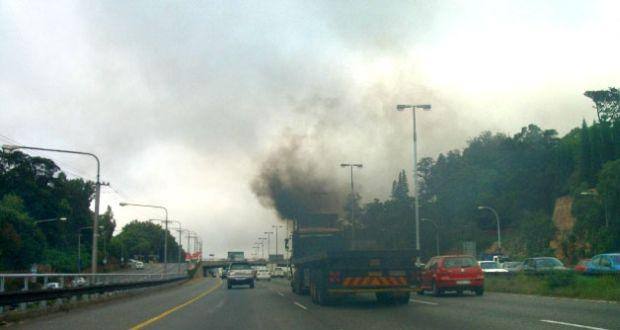Don’t Miss Out on the Latest Updates.
Subscribe to Our Newsletter Today!
Study shows air pollution more deadly than thought

Air pollution is on the rise and if we don't curb it, it could prove to be deadly.
 The effect of long-term exposure to air pollution is associated with increased mortality even when the pollution is below European Union limits, shows new research.
The effect of long-term exposure to air pollution is associated with increased mortality even when the pollution is below European Union limits, shows new research.
The research was conducted by the Utrecht University. The researchers, led by Utrecht professor Rob Beelen, used data from the European Study of Cohorts for Air Pollution Effects (ESCAPE), which included data from 13 European countries and a total of 367,251 people, Xinhua reported on Monday.
With each increase of 5 mg per cubic metre of particulate matter, the risk that someone dies increases by seven percent, the study showed.
'This is the difference between a busy street in the city, and a place without the influence of traffic,' Rob Beelen said.
The air quality norm in Europe is 25 mg per cubic metre, but the research showed the risks are still significant under 15 mg. (Read: How smog affects your health)
'Our findings show that there are significant health benefits to be gained when the concentrations of particulate matter will be further reduced,' Beelen added.
Particulate matter is the collective name for airborne particles that are so small that they penetrate deep into the lungs. The traffic is a major source, but factory plants and heating plants contribute to affect human health.
Air pollution in India
India is now ahead of China and everyone else in having the dubious distinction of having the world's most polluted air. Earlier this year an Environment Performance Index (EPI) report placed India at the bottom of the 132 countries assessed. Air in some Indian cities has particulate matter (PM) levels 5 times above safety limits.
Latest WHO air quality guidelines, in 2005, provide air quality standards to control and lessen the health impact of air pollution. WHO recommends decreasing the concentration of particulate matter (PM10), ozone (O3), nitrogen dioxide (NO2) and sulfur dioxide (SO2).
In India, PM10 levels are the biggest cause of health concern. In 2007, nearly 52% (63) cities were at critical PM10 levels ( 1.5 times limit). Higher PM10 levels were found in northern Indian cities with continuous increases in Mumbai, Faridabad, Lucknow, Bangalore and Delhi. PM10 is also strongly linked to prevalence of ADHD and acute respiratory infections. In recent times, SO2 levels have dropped in most cities except for some high-level areas such as Khurja, Nashik, Jamshedpur and Chandrapur. However, NO2 levels are on the rise all over India because of the rise in the number of vehicles. (Read: Air Pollution: Urgent cause for concern)
Preventing and countering air pollution
Reducing or minimizing exposure to air pollutants is the best way to prevent corresponding disease and deaths.
- Overall air pollution should be controlled by raising public awareness and public health agencies to implement measures that regulate vehicular emissions, dust, industrial and household chemicals. Individuals should also contribute to reducing, avoiding and countering air pollution.
- To reduce outdoor pollution use public transport, cycling and walking to commute, use energy-efficient appliances, avoid burning wood or trash and minimize harmful effects by masking your nose in heavy exhaust or smoke areas.
- To decrease exposure to indoor air pollution keep your living space clean (reduce insects, dust, molds, mildew), stay away from smokers, reduce usage of household chemical cleaners, spend minimal time in garages and install exhaust fans in kitchen and bathrooms.
- Boost your body's immunity and ability to counter the harmful effects of air pollution by increasing physical fitness (exercise) and a diet rich in antioxidants (fruits and vegetables). Research shows that harmful effects of major air pollutants (PM10, NO2and O3) were substantially lower in those who frequently ate fruits and soy.
For more articles, visit our Diseases and Conditions Section and for videos check out our YouTube Channel. Don't miss out on the latest updates. Follow us on Facebook, Twitter and Google Plus.


